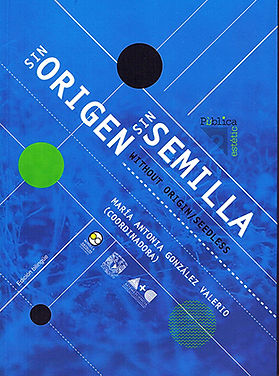LIBROS/
BOOKS
CABE LOS LÍMITES.ESCRITOS SOBRE FILOSOFÍA NATURAL DESDE LA ONTOLOGÍA ESTÉTICA.
MARÍA ANTONIA GONZÁLEZ VALERIO
México, Herder/UNAM, 2016.
¿Qué es la naturaleza resulta una pregunta ineludible para la filosofía, pues en su respuesta se juega lo que somos y nuestro lugar en el mundo. ¿Cómo producir los conceptos adecuados para pensar el mundo que enfrentamos hoy? ¿Cómo filosofar lo natural sin perder la especificidad de las humanidades y sin someterse al dominio tecnocientífico, pero tampoco sin pretender saber más y mejor que las ciencias en el terreno de la explicación material? ¿Cómo fundar un ámbito propio para la filosofía en el que tras la ubicuidad de la tecnociencia podamos volver a preguntar por lo natural?
What is nature? is an inescapable question for philosophy, for in its answer what we are and our place in the world is in play. How to produce the right concepts to think the world we face today? How to philosophise the natural without losing the specificity of the humanities and without submitting to the techno-scientific domain, but also without pretending to know more than the sciences in the field of material explanation? How to establish a proper field for philosophy in which the question of the natural can be asked again after the ubiquity of technoscience?
SIN ORIGEN/SIN SEMILLA
MARÍA ANTONIA GONZÁLEZ VALERIO (COORD.)
México, UNAM/Bonilla editores, 2015
Sin origen/Sin semilla fue la primera exposición de arte transgénico y biotecnológico en México. Se llevó a cabo entre 2012 y 2013 en el MUCA Roma y en el MUAC de la UNAM. Este libro reúne los textos que acompañaban a las piezas, como complemento, suplemento o incluso exceso frente a las propuestas plásticas, visuales y sonoras. Incluye también textos críticos de Jens Hauser, Deborah Dorotinsky y Rosaura Martínez.
Without origin/Seedless was the first exhibition of transgenic and biotechnological art in Mexico. It took place between 2012 and 2013 in the MUCA Roma and in the MuAC museums of the UNAM. This book brings together the texts that accompanied the pieces, as a complement, supplement or even excess in front of the plastic, visual and sound proposals. It also includes critical texts by Jens Hauser, Deborah Dorotinsky and Rosaura Martínez.
PRÒS BÍON. REFLEXIONES NATURALES SOBRE ARTE, CIENCIA Y FILOSOFÍA.
MARÍA ANTONIA GONZÁLEZ VALERIO (COORD.)
México, UNAM, 2015
Con los textos reunidos aquí se pretende incidir en el modo de plantear la pregunta por la relación entre arte, ciencia y filosofía. Hay que comenzar con las interrogaciones evidentes: ¿Por qué pensar una vez más esta relación?
¿Por qué crear nuevos puntos de intersección y de entrecruzamiento?
¿Qué es lo “nuevo” que hay aquí?
The texts gathered here attempt to present a starting point in the question about the relationship between art, science and philosophy. You have to start with the obvious questions: Why think about this relationship again?
Why create new points of intersection and overlapping?
What is the "new" here?
HACER LA PRESENCIA. FOTOGRAFÍA, ARTE Y BIOTECNOLOGÍA. México, Herder, 2014. POLONA TRATNIK
Dos son los temas principales que aborda este texto de la bioartista y filósofa eslovena Polona Tratnik: uno es la vida, y el otro los medios y la representación. Este libro trata, pues, sobre la vida y sus mediaciones. No es gratuito o extraño que en la era de la tecnociencia el pensar se demore en estos temas y trate de dilucidar qué es lo que hay y qué es lo que ha ocurrido. La vida aparece transformada y modificada desde la biotecnología.
There are two main themes addressed by this text by the Slovenian bioarchist and philosopher Polona Tratnik: one is life, the other media and representation. This book deals with life and its mediations. It is not gratuitous or strange that in the era of technoscience there is much thinking around these subjects trying to elucidate what is and how it has come to be. Life appears transformed and modified from biotechnology.





